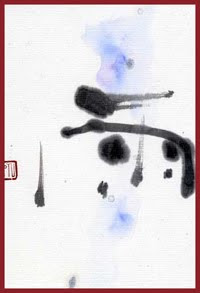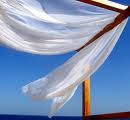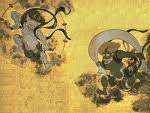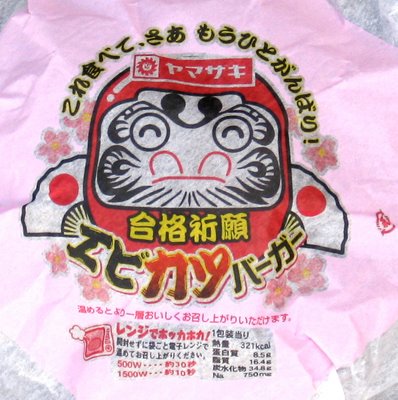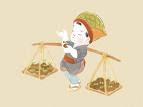[ . BACK to WORLDKIGO TOP . ]
::::::::::::::::::::::::::::::::::::::::::::::::::::::::::::::::::::::::::::::::::::::::::::::::::::
Nuts and fruits of trees (konomi)
***** Location: Japan
***** Season: Various in Autumn
***** Category: Plant
*****************************
Explanation
In autumn we have a lot of kigo using the expression
(name of tree) no mi
This
MI 実 can be a fruit as in many fruit trees like apples and pears, an acorn, a nut, a seed or seedpot or any other form.
These fruits and acorns have a long list of their own, see below.
If in doubt, I translate the NO MI as "fruit".
Please help to find the correct word for your region.
If you do not find your tree, check here too :
. Trees / kigo in all seasons
Also trees with special green leaves (wakaba) in spring kigo.
. Berries as Kigo
. Also check the ABC index of the WKD.
:::::::::::::::::::::::::::::::::::::::::::::::::::::::::::::::::::::::::::::::::::::::::::::::::::
kigo for late autumn
konomi, ko no mi 木の実 (このみ)
"fruit from the tree", berry, nut, seed, acorn ...
(NOT spelled :
kinomi, ki no mi in haiku)
konomidoki 木の実時(このみどき) time for fruit to fall
konomi otsu 木の実落つ
nuts, berries fall down
..... konomi furu 木の実降る(このみふる)
..... konomi shigure 木の実の時雨(このみのしぐれ)
..... konomi no ame 木の実の雨(このみのあめ)"rain of falling fruit"
konomi hirou 木の実拾う gather nuts, berries

konomigoma 木の実独楽
top made from a nut
:::::::::::::::::::::::::::::::::::::::::::::::::::::::::::::::::::::::::::::::::::::::::::::::::::::
kigo for late autumn
donguri 団栗 (どんぐり) acorn (from an oak tree)
..... kunugi no mi 櫟の実(くぬぎのみ)acorns from the Kunugi-oak tree
dongurigoma 、団栗独楽(どんぐりごま)top made from an acorn
donguri mochi 団栗餅(どんぐりもち)
rice cake with acorns
Eichel
- - - - -
Kobayashi Issa 小林一茶 - - - - -
団栗と転げくらする小猫哉
donguri to koroge-kurasuru koneko kana
the kitten
rolls around all day
with an acorn
This hokku is from the latter part of the 8th intercalary month (leap month; October) in 1824, about a month after Issa was divorced by his second wife after a marriage of just over two months. See Issa's Collected Works 4:500. At the beginning of this intercalary 8th month Issa had a slight stroke, and in the weeks that followed he stayed with several of his students.
The hokku is a revision of an earlier hokku written in the 9th month (October) of 1821:
donguri to hanetsu-kurasuru koneko kana
the kitten
spends the day pouncing
on an acorn
Tr. and comment by Chris Drake
.................................................................................
bodai no mi 菩提の実(ぼだいのみ)linden fruit
..... bodaiju no mi 菩提樹の実(ぼだいじゅのみ)
..... bodaishi 菩提子 (ぼだいし)
Tilia miqueliana. Lindenbaum
Ficus religiosa. Pepulbaum, Bo-Baum. Buddha-Tree
. enoki no mi 榎の実 (えのきのみ) Chinese hackberry .
..... e no mi 榎の実(えのみ), nettle tree berries
Celtis sinensis var. japonica. chinesischer Zürgelbaum
ginnan 銀杏 (ぎんなん)
gingko nut
ichoo no mi 銀杏の実(いちょうのみ)
Ginkgo biloba. Ginkgobaum
hashibami no mi 榛の実 (はしばみのみ) hazelnut
haze no mi 櫨の実 (はぜのみ)nuts of the Japanese wax tree
..... haji no mi はじの実(はじのみ
hoo no mi 朴の実 (ほおのみ) nuts from the magnolia hypoleuca
ichi-i no mi 一位の実 red fruit of the yew tree
.................................................................................
. kashi no mi 樫の実 (かしのみ)acorn, from the evergree oak
..... 橿の実(かしのみ)
. . . . . and
kunugi no mi 櫟の実(くぬぎのみ)Kunugi-oak acorn
nara no mi なら (楢 ) の実 Nara-oak acorn
..... hahaso no mi 柞の実(ははそのみ)
shii no mi 椎の実 (しいのみ) Shii-oak acorns
.................................................................................
kaya no mi 榧の実 (かやのみ) torreya nuts
..... shin kaya 新榧子(しんかや)
Their oil is used for frying tempura.
Torreya nucifera. japanische Nusseibe
.................................................................................
. kiri no mi 桐の実 (きりのみ) paulownia nut
family Paulowniaceae
aburagiri no mi 油桐の実 (あぶらぎりのみ)nut of the Aleurites cordata
..... toyu no mi 桐油の実(とゆのみ)
Aleurites cordata. Tungbaum
iigiri no mi 飯桐の実 (いいぎりのみ ) nut of the Iigiri
Idesia polycarpa
..... nantengiri 南天桐(なんてんぎり)
tobera no mi 海桐の実 (とべらのみ) nut of the
Pittosporum tobira
.................................................................................
kusagi no mi 臭木の実 (くさぎのみ)
fruit of Clerodendron trichotomun
..... kusagi no mi 常山木の実(くさぎのみ)
masaki no mi 柾の実 (まさきのみ) spindle tree fruit
Euonymus japonicus. Spindelbaum
mayumi no mi 檀の実 まゆみのみ Euonymus hamiltonianus fruit
..... mayumi no mi 真弓の実(まゆみのみ)
..... yamanishikigi 山錦木(やまにしきぎ)"mountain brocade tree"
Euonymus sieboldianus. japanischer Spindelbaum
mochi no mi 黐の実 (もちのみ) ilex fruit
mochi no ki no mi もちの木の実(もちのきのみ)
toosei 冬青(とうせい)"winter green"
Quercus ilex. Steineiche
muku no mi 椋の実 (むくのみ) nuts from Aphananthe aspera
mukuroji no mi 無患樹の実(むくろじのみ) Mukuroji fruit. soap nut
.....
mukuroji 無患子 (むくろじ)
Sapindus mukurossi. japanischer Seifennussbaum
. Hagoita 羽子板 Battledore, Shuttlecock .
mukuroji berries were used to fix the feathers.

murasaki shikibu no mi 紫式部の実(むらさきしきぶのみ)
berries of Callicarpa japonica
murasaki shiksibu 紫式部 (むらさきしきぶ)
mimurasaki 実紫(みむらさき)
koshikibu 小式部(こしきぶ)small shikibu
shiroshikibu, shiro shikibu 白式部(しろしきぶ) white shikibu
Callicarpa japonica. Schönfrucht, Liebesperlenstrauch
nemu no mi 合歓の実 (ねむのみ) silk tree fruit
Albizia julibrissin. Albizzie
ouchi no mi 楝の実 (おうちのみ) chinaberry
..... sendan no mi 栴檀の実(せんだんのみ)
Melia azedarach. Einsiedlerbaum
.................................................................................
oriibu no mi オリーブの実 (おりーぶのみ)
olives (fruit)
(oriibu no hana オリーブの花 (おりーぶのはな) olive flowers/blossoms
is a
kigo for mid-summer .)
. WASHOKU
オリーブ Olive products from Shodoshima 小豆島
.................................................................................
saikachi no mi 皀角子の実(さいかちのみ)fruit of Saikachi
saikachi 皀角子 / 皀萊 (さいかち)
saikashi さいかし、
keiseishi 鶏栖子(けいせいし)
kawarafuji no ki かわらふじのき
Gleditsia japonica Miq. japanische Gleditschie
sugi no mi 杉の実 (すぎのみ) nuts from the cedar
..... sugideppo 杉鉄砲(すぎでっぽう)"cedar cannon"
tochi no mi 橡の実 (とちのみ) horse chestnuts
..... 栃の実(とちのみ)
usurhi no mi 漆の実 (うるしのみ) fruit of the laquer tree
:::::::::::::::::::::::::::::::::::::::::::::::::::::::::::::::::::::::::::::::::::::::::::::::::::::
mountain ash (nanakamado ななかまど)
..... nanakamado 七竈(ななかまど)、野槐(ななかまど)
nanakamado no mi ななかまどの実(ななかまどのみ)
kigo for late autumn
Sorbus commixta
The fruit are bright red berries.
. . . CLICK here for Photos !
Eberesche
*****************************
Worldwide use
North America
Carya Fruits (hickory nuts)
Hickory fruits consist of hard-shelled nuts, surrounded by a woody husk. The husk varies among species as to how easily it splits and whether the sutures are winged along part or all of their length.

The nuts are edible, although they vary in size and taste. Carya illinoinensis (pecan) and C. laciniosa (kingnut) are the largest and taste the best, whereas C. cordiformis (bitternut hickory) and C. glabra (pignut hickory) taste bad.
source : www.cas.vanderbilt.edu
the rattle sound
from a hickory nut's roll --
empty mailbox
Chibi (pen-name for Dennis M. Holmes)
2006
meditation -
a hickory nut
hits the skylight
Maria Tadd
The Heron's Nest
:::::::::::::::::::::::::::::::::::::::::::::::::::::::::::::::::::::::::::::::::::::::::::::::::::::
Yemen
Olive fruit
kigo for autumn
Olive trees represent important strategic income in countries like Spain, Jordan, Syria, Palestine and Lebanon. Yemen can depend on olives to replace the qat tree which consumes a large quantity of water and causes several diseases.
Ashami confirmed that olive trees have been planted among qat trees in Shibam
Kawkaban and that families have realized economic success and increasing income by growing the plant.
source : www.yementimes.com
Kawkaban's new fruit…
Do you know how to pickle?
goats chewing olives
Heike Gewi
August 2010
*****************************
Things found on the way
Buna no mi ぶなのみ (欅/椈 の実)beechnut
Kuri 栗 くり Chestnut, sweet chestnut
Kurumi くるみ (胡桃) walnuts
Tochi とち (橡/栃/杼) horse chestnut
. . Food from the Bountiful Woods
(Mori no Megumi)
*****************************
HAIKU
poketto no konomi kutsukutsu warai au
acorns in my pocket:
they chuckle
at each other
Yagi Miyoshi
source : www.haiku-hia.com
*****************************
Related words
If you did not find your tree, check here too :
. Trees / kigo in all seasons .
. Berries as Kigo .
***** AUTUMN . . . PLANTS - SAIJIKI
:::::::::::::::::::::::::::::::::::::::::::::::::::::::::::::::::::::::::::::::::::::::::::::::::::::
[ . BACK to DARUMA MUSEUM TOP . ]
[ . BACK to WORLDKIGO . TOP . ]
:::::::::::::::::::::::::::::::::::::::::::::::::::::::::::::::::::::::::::::::::::::::::::::::::::::




